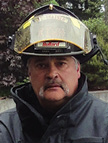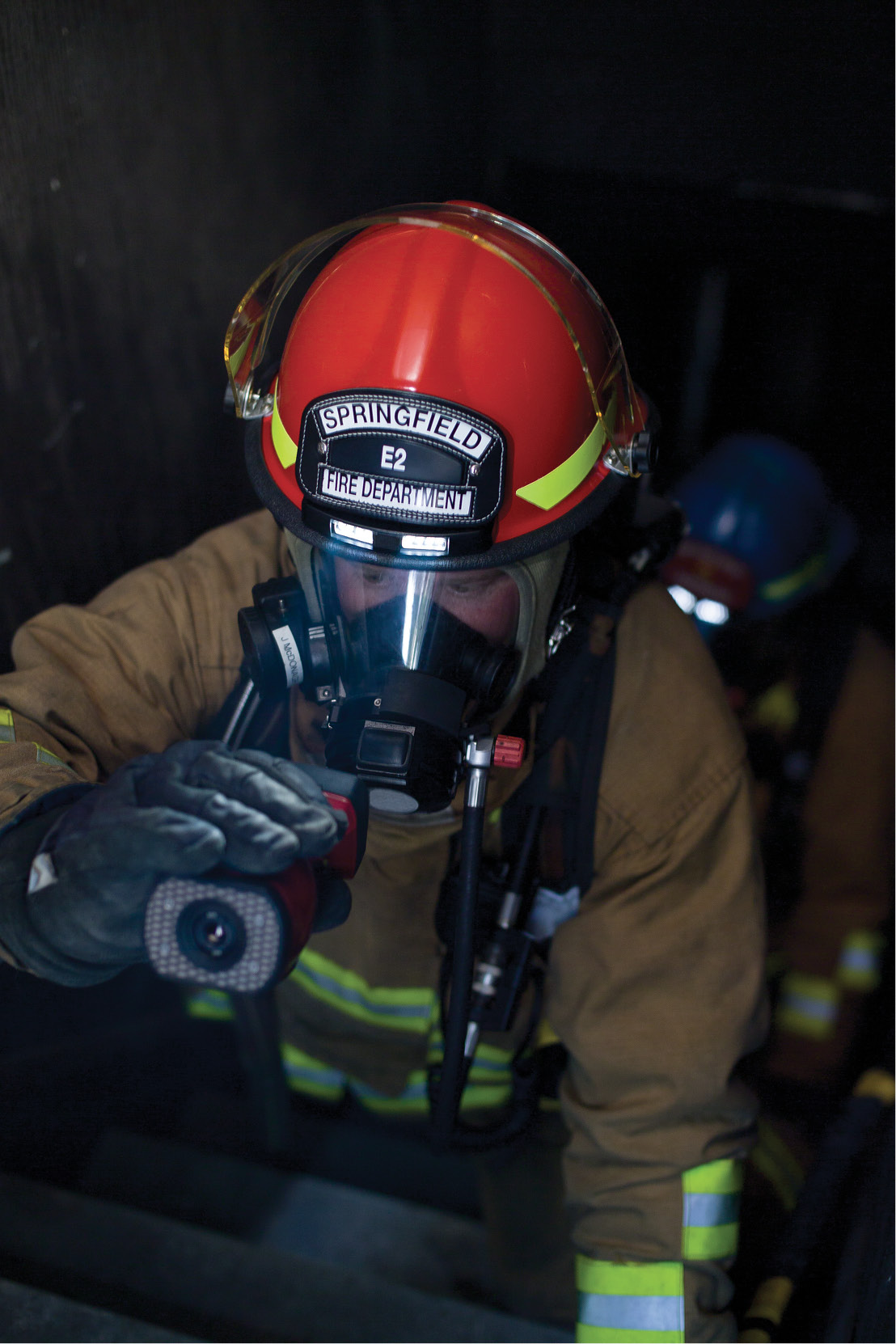
Touch, taste, smell, hearing, and sight are the five senses that impact our lives every day. These senses help us to learn and enjoy our world while also protecting us from the unknown occurrences that happen daily.

By Manfred Kihn
We rely on our senses to work together to give us a clear picture of the things that are happening around us. This is particularly true for firefighters who need to rely on all of these senses to conduct their jobs safely and effectively.
Touch consists of pressure, temperature, vibration, pain, and other sensations that are vital to keeping firefighters safe on the fire scene. If firefighters were not able to process heat, cold, textures, structures, equipment controls, or human contact, they would be incapable of performing their jobs.
Hearing for firefighters is equally important. Firefighters rely on hearing the early warning sounds of structural collapse, critical radio traffic, a PASS device alarm from a distressed firefighter, or a victim’s call for help. The lives of firefighters and others would be endangered without the sense of hearing.
The sense of smell varies from one person to another to the degree of accurately identifying the smell. This is also true for firefighters, with some firefighters being able to detect the slightest hint of natural gas or faint traces of smoke, while others are often unaware of strong smells until someone tells them. Think about the calls your fire department has responded to involving odor or light smoke in a building and one firefighter on entry says the source smells electrical and another firefighter cannot make the same determination because he cannot smell it. Or, your fire department responds to a carbon monoxide call and a firefighter detects the odor of unburned hydrocarbons from poor combustion. Since carbon monoxide is odorless, what is this firefighter really smelling, if anything? The precision of our olfactory sense can vary dramatically.
For firefighting, the sense of taste is probably the least important, but it’s intertwined with the sense of smell, and these two senses function together to give us early warning of airborne dangers.

1 Using a TI gives firefighters back their sense of sight when on the fire scene. (Photo courtesy of Bullard.)
That brings us to the sense of sight, which has been augmented the most in recent years as it relates to firefighting. Firefighting thermal imagers (TIs) bolster our senses and improve decision making capability because they detect heat energy, specifically long-wave infrared energy, and are largely unaffected by smoke and other particulates. By many, sight is perceived as the most precious of the senses. It enables us to process information quickly and often without even being consciously aware. Sight helps us to determine whether situations are safe or dangerous.
Under normal conditions, to see and process visual cues is a routine matter, but firefighters often function in limited sight environments where these typical cues may no longer be available. When visually impaired, firefighters attempt to compensate by using other senses. Although these other senses can be powerful, they’re often muted when a firefighter is fully dressed in turnout gear and self-contained breathing apparatus (SCBA). Touch is obscured by heavy clothing and equipment that cover every part of the body. Hearing is similarly constrained and made worse by the various foreign and confusing sounds involved in firefighting. Taste and smell are usually limited to the air coming from an SCBA bottle. The reality is that when it gets really tough, firefighters need their sense of sight.
The environment of firefighting is complex and disorienting. Though the modern firefighter is protected better than ever before, sight is critical to navigating safely in and out of a fire. Once deemed too expensive by many fire departments, the TI has filled a role beyond the obvious one—providing sight to navigate. It also helps firefighters gain a situational and advanced awareness from the diminishing of other sensory inputs.
During a fire when smoke conditions block a firefighter’s ability to see with his eyes or with the aid of a flashlight, a TI processes infrared heat signatures from objects as benign as walls or tables to conditions as serious as fire, restoring sensory understanding. Using a TI, firefighters can navigate through structures and even analyze heat and fire conditions to determine fire source and spread and facilitate a safer, more effective mitigation of the fire event. The TI is a critical tool because it enables firefighters to see through dense smoke, displaying an image of a firefighter’s surroundings on a bright display screen that is usually visible even in heavy smoke conditions.
TIs allow firefighters to see in adverse hazardous and smoke-filled environments that would have limited visibility with the naked eye. Whatever the application, including search and rescue, interior fire attack, accountability, or size-up, a TI should be an integral component of your response protocol.
Let’s also consider the possibility of a sixth sense, which could be interpreted as a firefighter’s sensory systems firing on all cylinders combined with preparedness, training, equipment, and the knowledge to make the best decisions that merit the best possible outcomes. A TI can enhance a firefighter’s capabilities unlike any other single tool. It is the gift of sight for a firefighter.
Manfred Kihn is a 19-year veteran of the fire service, having served as an ambulance officer, emergency services specialist, firefighter, captain, and fire chief. He has been a member of Bullard’s Emergency Responder team since 2005 and is the company’s fire training specialist for thermal imaging technology. He is certified through the Law Enforcement Thermographers’ Association (LETA) as a thermal imaging instructor and is a recipient of the Ontario Medal for Firefighters Bravery. If you have questions about thermal imaging, you can e-mail him at manfred_kihn@bullard.com.

